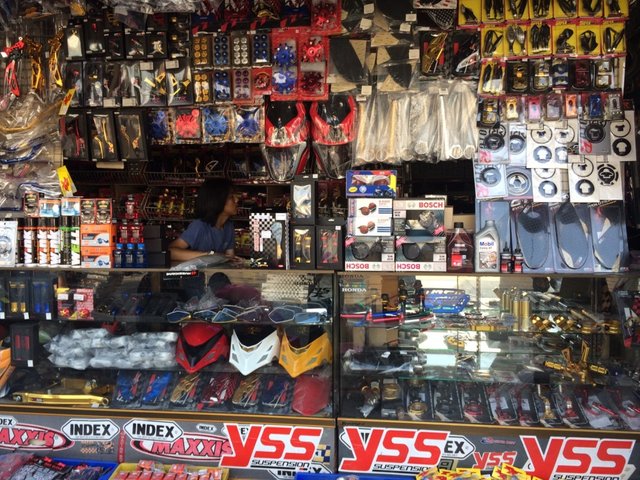Understanding Bike Gears: How to Enhance Your Riding Experience
In the realm of motorcycling, mastering the art of gear adjustment is crucial for boosting your riding performance. Appropriately understanding and utilizing bike equipments can considerably influence fuel, control, and acceleration effectiveness, changing an average ride into a smooth, thrilling trip. By integrating precise change timing and adapting gear option to various roadway problems, bikers can guarantee ideal engine performance and safety and security. The nuances of clutch control, throttle sychronisation, and equipment technicians beckon a deeper expedition, assuring to unlock the full potential of your equipment. Just how can these methods be utilized to genuinely maximize your riding experience?
Recognizing Gear Mechanics
At the core of motorcycle characteristics, gear auto mechanics play a crucial role in transforming engine power into motion, inevitably dictating speed and control. The gear proportions, carefully made, identify the partnership between engine revolutions and wheel turns, influencing acceleration and fuel effectiveness.
Comprehending equipment technicians begins with identifying the value of the gearbox, which houses numerous gears of differing dimensions. These gears communicate via a process known as meshing, where teeth of various gears engage to transfer power.
In addition, the principle of gear moving is essential to making best use of efficiency. Timely and smooth changes make sure that the engine operates within its ideal power band, stopping unneeded stress and boosting durability (moto parts nz). By comprehending these mechanical intricacies, cyclists can accomplish a harmonious mix of control, performance, and power, elevating their riding experience
Timing Your Shifts
Change timing proficiency is necessary for optimizing motorbike performance and improving the riding experience. Effectively timed changes make sure that the engine operates within its ideal power band, which is essential for preserving control, accomplishing smooth acceleration, and making sure the longevity of the motorcycle. Motorcyclists have to create an instinctive feeling of when to move equipments, which involves understanding the relationship in between engine revolutions per min (RPM) and rate.
To understand change timing, pay very close attention to the engine's sound and feel, as these supply crucial clues about when to change gears. When the engine approaches the upper variety of its power band without reaching the redline, the suitable shift point generally happens - motorbike shop. Shifting prematurely can bring about a lack of power, while shifting far too late may trigger unneeded engine strain
In addition, road conditions and riding design influence change timing. For example, in city settings, smoother and extra constant changes might be necessary to navigate web traffic efficiently. In comparison, during freeway riding, fewer changes at greater speeds can be better. Exercising in varied atmospheres will enhance your capacity to time changes exactly, inevitably elevating your riding experience to a specialist degree.
Enhancing Gas Efficiency
While mastering bike gears is critical for efficiency, improving fuel effectiveness is equally vital for both environmental and economic factors. Optimum fuel usage not only reduces functional costs but likewise decreases the ecological best summer motorcycle pants impact of riding. To accomplish this, one must comprehend the intricate partnership in between gear choice and engine efficiency.
Riding in a higher gear at lower rates can lead to engine lugging, which is harmful to both gas economy and engine health and wellness. Alternatively, riding in lower equipments at high speeds results in unneeded fuel intake.
In addition, normal upkeep plays a crucial function in gas effectiveness. Ensuring that the motorbike is well-tuned, with tidy air filters and properly inflated tires, can enhance aerodynamics and decrease fuel wastefulness. Additionally, adopting a riding style that embraces steady acceleration and smooth deceleration can add to much better gas economic situation.
Methods for Smooth Transitions
Accomplishing smooth equipment changes is fundamental to enhancing the riding experience and making sure the long life of a motorbike's transmission system. Proper equipment shifting not only adds to a seamless adventure however likewise minimizes deterioration on the mechanical parts. To grasp the art of smooth transitions, cyclists have to concentrate on a couple of key strategies.

Second of all, clutch control plays an essential function. Engaging and disengaging the clutch efficiently needs practice. The clutch bar must be launched gradually, enabling for a seamless transfer of power from the engine to the wheels without triggering a jolt or sudden activity.

Adjusting to Roadway Problems
Browsing varied roadway problems is a vital skill for any type of motorcyclist aiming to maintain control and safety. Whether you're riding on wet surface areas, gravel roadways, or browsing doglegs, your capability to adapt your equipment usage and riding technique is vital. Recognizing how to adjust your equipments appropriately can dramatically influence grip and security, making sure a safer trip.
In comparison, when riding on gravel or unequal surface, lower equipments are preferable. Lower gears supply far better control and enable you to react even more promptly to unforeseen changes in the roadway surface.
Sharp contours require specific equipment administration to stabilize rate and control. Downshifting prior to entering a contour can help maintain momentum while guaranteeing the bike continues to be stable throughout the turn. Constant method in varied conditions boosts your ability to react and predict to modifications in road appearance and slope.
Final Thought
Understanding bike gears dramatically improves motorcycle gear shop near me the riding experience by improving gas, control, and velocity performance. Adapting equipment option to different roadway conditions, such as making use of greater gears on wet surface areas and reduced equipments on crushed rock, additional boosts handling and safety and security.
Recognizing equipment auto mechanics begins with identifying the value of the transmission, which houses several equipments of differing sizes. These equipments interact through a process recognized as meshing, where teeth of different equipments engage to transfer power (mx parts nz). Gentle modifications to the throttle throughout equipment changes can stop jerky motions and keep a constant riding rate
Whether you're riding on damp surface areas, crushed rock roads, or navigating sharp turns, your capacity to adapt your equipment use and riding method is paramount. Adapting gear choice to numerous roadway conditions, such as making use of higher equipments on wet surfaces and lower gears on crushed rock, additional enhances handling and safety and security.